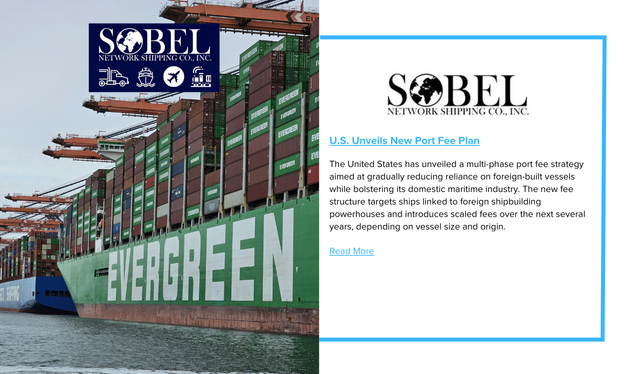The United States has unveiled a multi-phase port fee strategy aimed at gradually reducing reliance on foreign-built vessels while bolstering its domestic maritime industry. The new fee structure targets ships linked to foreign shipbuilding powerhouses and introduces scaled fees over the next several years, depending on vessel size and origin.
The policy revision follows pushback from shipping stakeholders earlier this year, who voiced concerns that initial proposals could significantly raise operational costs. The adjusted approach introduces $0 fees for the first 180 days starting April 17, with gradual increases up to $140 per net ton by 2028. Charges will apply up to five times annually per vessel, with carve-outs for smaller vessels, U.S.-flagged ships, and ships used in specific short-haul or export-supporting services.
Additionally, vessels built abroad—including container ships and specialized car carriers—will face rising port usage fees unless they meet strict exemptions. These exemptions cover factors such as ship size, proximity of travel, and U.S. ownership, and aim to balance policy enforcement with practical maritime operations.
To encourage investment in U.S. shipyards, the government has introduced remission options for operators who commit to acquiring domestically built vessels within a three-year window. Other incentives focus on expanding the domestic capacity for building liquified natural gas (LNG) vessels, ro-ro carriers, and other specialized ships, with future fees and restrictions phasing in over the next two decades.
The policy shift also includes pending public commentary periods on proposed new tariffs—up to 100%—on critical port infrastructure equipment, such as ship-to-shore cranes and chassis, raising additional concerns among trade groups.
While the adjustments were designed to soften the economic blow to importers and exporters, many in the maritime sector remain wary. Critics argue that the fees could still lead to service consolidation at major ports, driving up shipping costs and reducing access to international markets for smaller exporters.
Despite differing perspectives, the fee structure marks a significant evolution in U.S. maritime trade policy. It reflects a broader strategy to regain footing in shipbuilding and safeguard national supply chain resilience amidst growing global competition.


